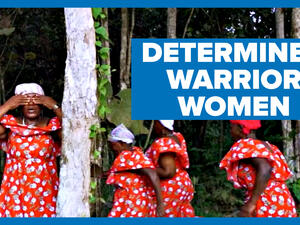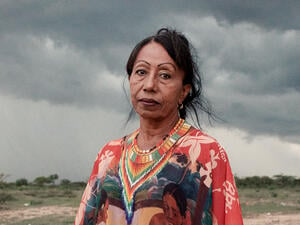Colombia: UNHCR monitoring team reports situation tense in Nariño department
Colombia: UNHCR monitoring team reports situation tense in Nariño department
A UNHCR team just back from a monitoring mission in the southern Colombian department of Nariño says the situation in the region remains very tense following an upsurge in unrest and violence that has led to the forced displacement of thousands of people since the start of the year.
During its three-day mission, the team visited several communities in northern Nariño to monitor conditions for a group of some 2,200 people who returned to the area at the end of May after being the victims of forced displacement. The team found that protection concerns in the region remain high and extend to much of the civilian population, including displaced persons and communities at high risk of forced displacement as well as those who have recently returned.
Some of the major challenges faced by the population include the presence of irregular armed groups, threats and targeted killings of civilians, armed combat between the groups, the absence of state institutions - including health and education - and the lack of stable economic opportunities. In such a difficult environment, people in several locations showed a clear reluctance to talk.
The team also reported that there have been more cases of forced displacement from the area in the past few weeks. The village of Santa Lucia, for example, is now empty following heavy combat between irregular armed groups at the end of May. Many people are going to the provincial capital, Pasto, where on Thursday the local church confirmed that some 500 (128 families) displaced people had arrived in the past month.
Since the start of the year, more than 9,000 people have been forced to flee their homes in Nariño because of the armed conflict. Nariño, in the south-west of the country and bordering Ecuador, is one of Colombia's poorest and least developed regions, with a population of about half a million people. Ethnic minorities make up a relatively large percentage of the population (8 percent indigenous and 18 percent Afro-Colombians) and are very badly affected by the conflict. This is the case all over Colombia, with a much higher incidence of forced displacement among ethnic minorities than in the rest of the population.
There are some 2.5 million internally displaced people in Colombia. This is the largest population of concern to UNHCR in any country in the world. We have been working on behalf of displaced people in Colombia since the late 1990s. UNHCR coordinates with state institutions at the local and national levels and with Colombia's civil society, including organisations of displaced people, to find durable solutions for those already displaced, to guarantee the protection of the rights of displaced people and to avoid new forced displacement.









